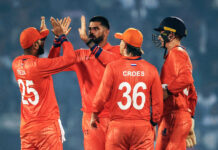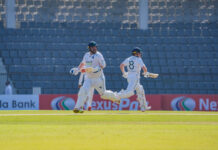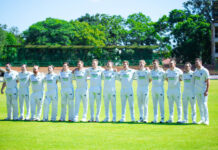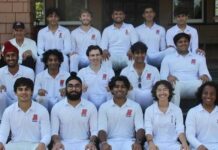“Across continental Europe, except for Netherlands and maybe Serbia and Corfu, it’s the same thing. It is a big challenge to grow the sport and have it accepted by Europeans from non-cricketing backgrounds, particularly in men’s cricket,” states Vignaesh Sankaran.
Speaking with Emerging Cricket, the Deutscher Cricket Bund (DCB) Vice President is refreshingly blunt and candid about his assessment of the European cricket scene; particularly the difficulties in breaking through to the local European community.
It is a reality which stands in sharp contrast to scenes elsewhere in Asia and Africa, where cricket has been much more accepted by the local population, including in countries with little history or tradition of the sport. It’s a fact that Sankaran and DCB are keenly conscious of.
“Our long-term goal is to make the average Germany identify with the sport. Look at American Football; it is much more popular in Europe compared to cricket even though it’s basically a one-country sport.”
Afghan migrants and German cricket
Despite cricket’s current status as a niche sport, it has a long, historical tradition in Germany dating back to 1858. It was when the nation’s first cricket club, Berlin CC, was founded by English and American residents. Before WWI, German football maintained a close relationship with their cricket counterparts and operated together under the umbrella of the German Football and Cricket Federation (DFCB).
In 1912, cricket split from football to form its own independent organisation, DCB, with eight founding members including Berlin, Hamburg, Frankfurt and Düsseldorf. However, with little buy in from the wider German society, it experienced a rapid decline and became extinct after the first World War. The first wave of immigration from Asian countries in the 1960s and 1970s renewed interest in the sport, leading to the formation of the modern DCB in 1988. And in 1991, Germany officially became an ICC member in the affiliate category, which got upgraded to associate status in 1999.
In recent years, the story of German cricket has become closely intertwined with the rapid influx of Afghan refugees and migrants. In 2015, ex-Chancellor Angela Merkel’s decision to open the borders to forced migrants stuck in neighbouring countries had a tsunami-sized impact, with the number of cricket clubs going up from 30 to more than 200 in lightning quick time. The Afghans have also helped raise local cricketing standards considerably.
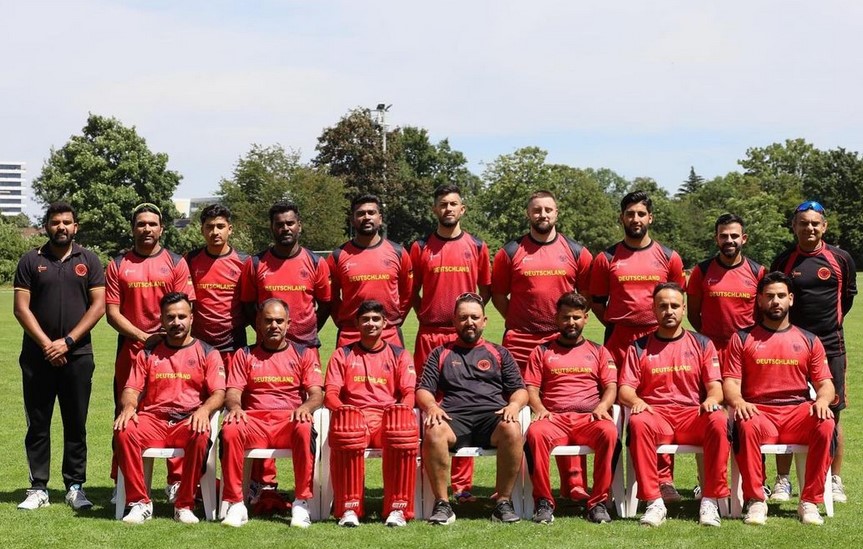
“Undoubtedly, the migrant influx has had a big social impact on German society and helped our cricket scene grow. It has led the government to identify the sport as an integration tool. However, we have reached a point where we want cricket to be seen as a German sport, rather than a sport just for migrants and refugees,” states Sankaran.
Sankaran’s cricketing journey
The DCB Vice-President’s own migrant story couldn’t be more different to those of the Afghan community, most of whom arrived in Germany fleeing civil war and the Taliban.
“In 2002, I moved to Germany to pursue Masters in Robotics at Darmstadt. I chose Germany because it is much closer to Chennai than USA, you have a direct flight,” he laughs.
After completing his degree, Sankaran secured a job and settled in for the long haul. “In 2010, I went back to the university to complete my PHD in textile automation at Dresden. Took me seven years to complete. Around 2018, I decided that I had had enough of university and switched back to working in the automative industry,” he states.
Sankaran also played cricket regularly while completing his PHD. “2017 was my best year. I won the German national championship with my club,” he recalls nostalgically.
While, Sankaran no longer plays cricket, he has become actively involved with coaching and administration in the last three years. In 2022, he became the DCB Vice President, which he admits to taking most of his spare time these days. He has also become fully proficient in speaking German, having taken language lessons after his arrival in 2002.
Domestic Cricket and Bundesliga
In Germany, the cricket season runs from April to September before switching to indoors from October, as temperatures plunge. There is a wide variety of tournaments on offer with 50 Overs Bundesliga, T20 Bundesliga, the Frauenbundesliga as well as multiple youth leagues. Sankaran informs me that there are 6,500 senior males and 700 women currently playing hardball cricket, with junior participants numbering around 1,200.
“We also established an U19 league for girls form this year. In Europe, we are looking at becoming possibly the only nation behind Ireland, Scotland, England and Netherlands to have an active U19 women’s team,” says Sankaran.
“On top of all that, we have around 7,000 to 8,000 cricket participants across the country, playing a modified version of the sport. We have expanded considerably. Even in East Germany, we now have more than 15 cricket clubs.”

The national setup is ethnically diverse, with a healthy mix of Indians, Pakistanis and Afghans who make up the vast majority of cricketers on the men’s side. There are also a small minority of participants from the British, South African and Australian expat community.
“On the women’s side, we have a lot more Germans from non-cricketing backgrounds and Germany born players. That is something we are proud of,” asserts Sankaran. “In the last two years, we have pushed for having more female representation on the board. Also, we are trying to hire more local German qualified sports administrators who don’t come from a cricketing background.”
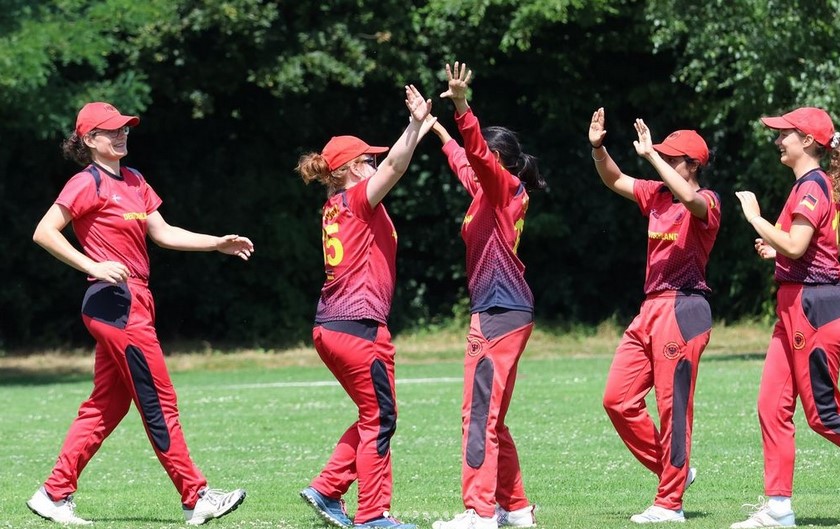
Infrastructure
As with many mid and lower tier Associate countries, the vice-president concedes that access to good facilities and cricket infrastructure remains an ongoing challenge.
“We had British army bases in Germany who had maintained turf cricket pitches. Even though they have now vacated those facilities, we didn’t have the capacity to take it over and maintain it. So unfortunately, those are all gone, and we are trying to build some new turf facilities.”

Currently, DCB organises all its domestic league and cup competitions on matting and mobile pitches in shared multi-sport facilities. “In some areas, we have developed a great relationship and understanding with our Rugby and Polo counterparts.
“That said, we opened a new dedicated cricket facility and high-performance centre near Dusseldorf. It is something we would love to replicate in more places,” says Sankaran.
ECL and T20 Subregional Qualifiers
The modern story of German cricket is tied rather closely with the emergence of the European Cricket League (ECL), a T10 event modelled on Football’s UEFA Champions League concept. A brainchild of former national player Daniel Weston, the league competition has grown rapidly in prominence since its inception in 2019. First contested by eight clubs from Denmark, France, Germany, Italy, Netherlands, Romania, Russia and Spain, the tournament has expanded dramatically to feature as many as 35 clubs from 33 European nations in 2024.
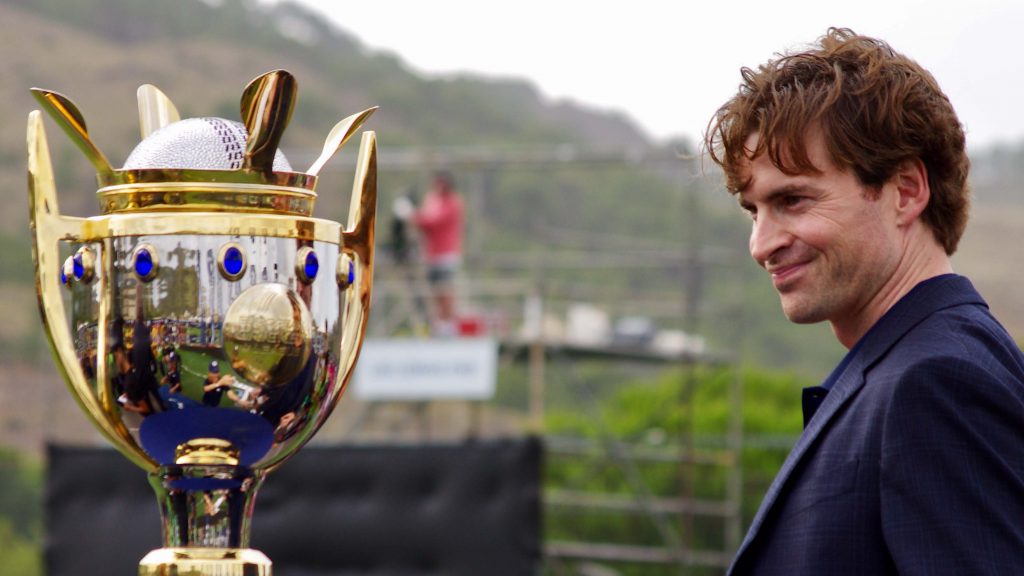
DCB see Weston as an integral development partner in growing the game. “Our relationship with Dan goes a long way. In the last 3-4 years, many of the European Cricket Series (ECS) events have been hosted here in Germany.
“It is a win win situation for us! It has given us some traction at the club level and built brand awareness, in terms of what a potential professional cricket system can look like. ECL and ECS currently bridge that gap between amateur and professional sports, that’s where his product is perfectly positioned.”
However, with the overwhelming majority of the viewership for ECL and ECS originating from the subcontinent, the DCB vice-president concedes that there is an urgent need to build local interest and achieve sustainable growth.
Earlier this year, Germany hosted its first ever ICC event with the T20 World Cup Europe Sub-regional Qualifier B taking place at Krefeld. It was a tough ask for the Germans with only one team out of the ten participants, qualifying for the regional final. Nevertheless, the team put in a respectable performance, beating Croatia in the third-place playoff to finish third overall. Jersey secured the sole slot for the final European qualifier.
“It was fantastic to host. Was a huge learning experience for all of us; right from the volunteers to the administrators to know what it takes to organise and host such events.
“The most challenging part was that the qualifier took place while Germany was hosting the European Football Championships. One of the venues that was set up for cricket was taken out for outdoor football watching by the public. They set up these big screens, unfortunately the outfield ended up getting damaged quite badly. So, we had to shift it to a single venue at Krefeld,” states Sankaran.
Future of German Cricket
On the future of German Cricket, he sees a clear, overarching objective.
“The future goal is to be identified and accepted as a German sport. If we are able to achieve that, all the other things like infrastructure, volunteers and sponsors follow from that. We need to create that German cricket culture which is appealing to all. As it stands, it’s an expat sport, particularly on the men’s side. Therefore, from a KPI perspective, we want to increase cricket participants and fans from a non-cricketing background and create an ecosystem of people willing to dedicate their time to it.”
To achieve that, DCB are working on creation of a new five-year strategy, with the primary focus on getting cricket into the national schools system.
“It would really enable us to grow the sport from the grassroots. We did some analysis; on a superficial level you would need a million euros per year to start this kind of development initiative. We mainly rely on ICC funding to operate, so there is a need to find other sources of income and attract local sponsors to invest in cricket. That is a big financial challenge, but we are ambitious.”
Despite the many barriers, Sankaran sees optimism in the openness of German people to explore and take up new sports.
“In 2003, I was doing an internship near Munich. One of my colleagues told me that as a hobby I could run a sports course in the university, as part of the weekly curriculum. Now the only sport where I was confident in giving lessons in was cricket. So eventually the cricket course gets announced and within three days, to my astonishment, it was full, with around 50 registrants. I got the participant list and 30 of them were female. So, the potential is definitely there, we just need to capture and harness it.”
You’re reading Emerging Cricket — brought to you by a passionate group of volunteers with a vision for cricket to be a truly global sport, and a mission to inspire passion to grow the game.
Be sure to check out our homepage for all the latest news, please subscribe for regular updates, and follow EC on Twitter, Facebook, LinkedIn and YouTube.
Don’t know where to start? Check out our features list, country profiles, and subscribe to our podcast. Support us from US$2 a month — and get exclusive benefits, by becoming an EC Patron.


